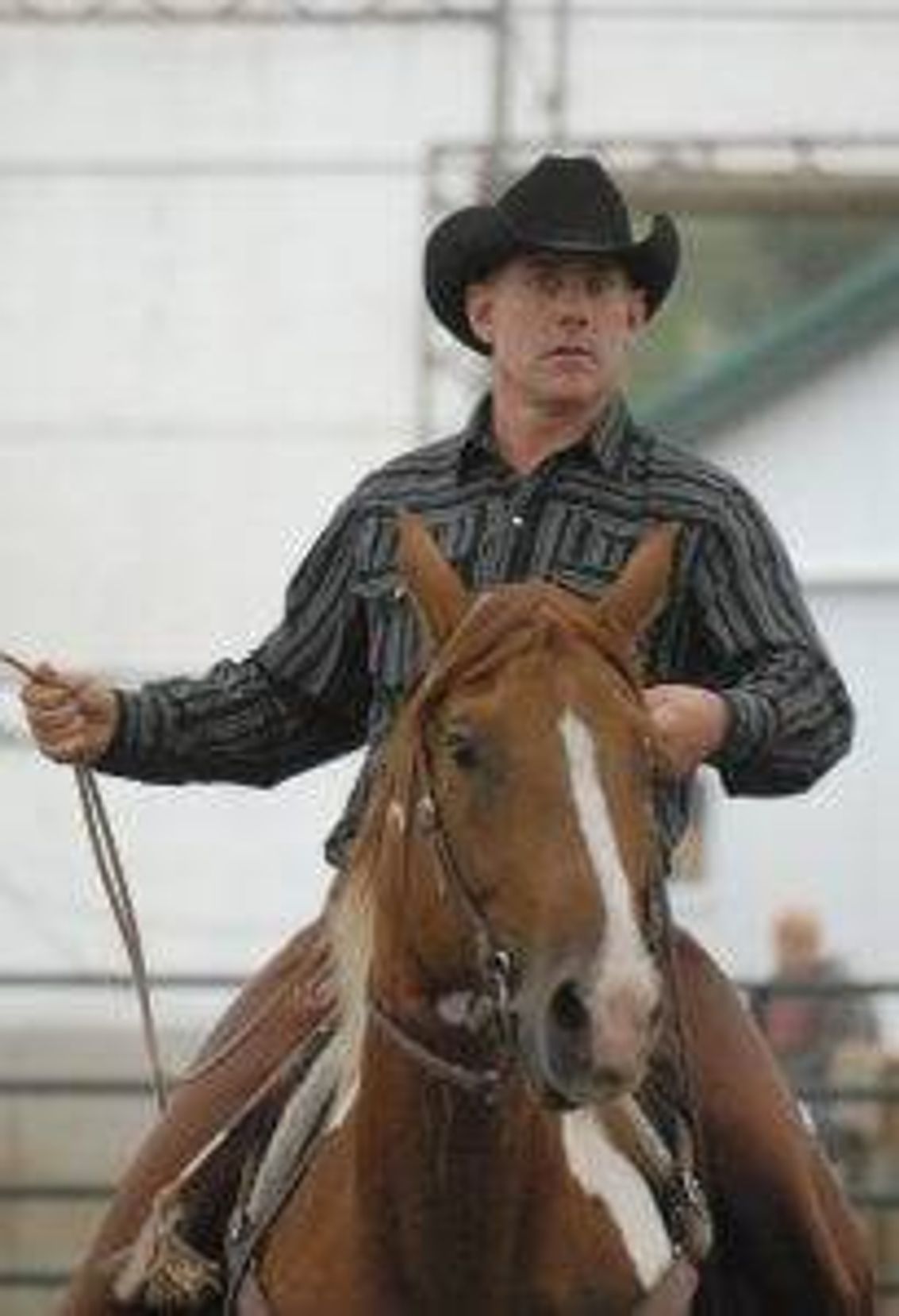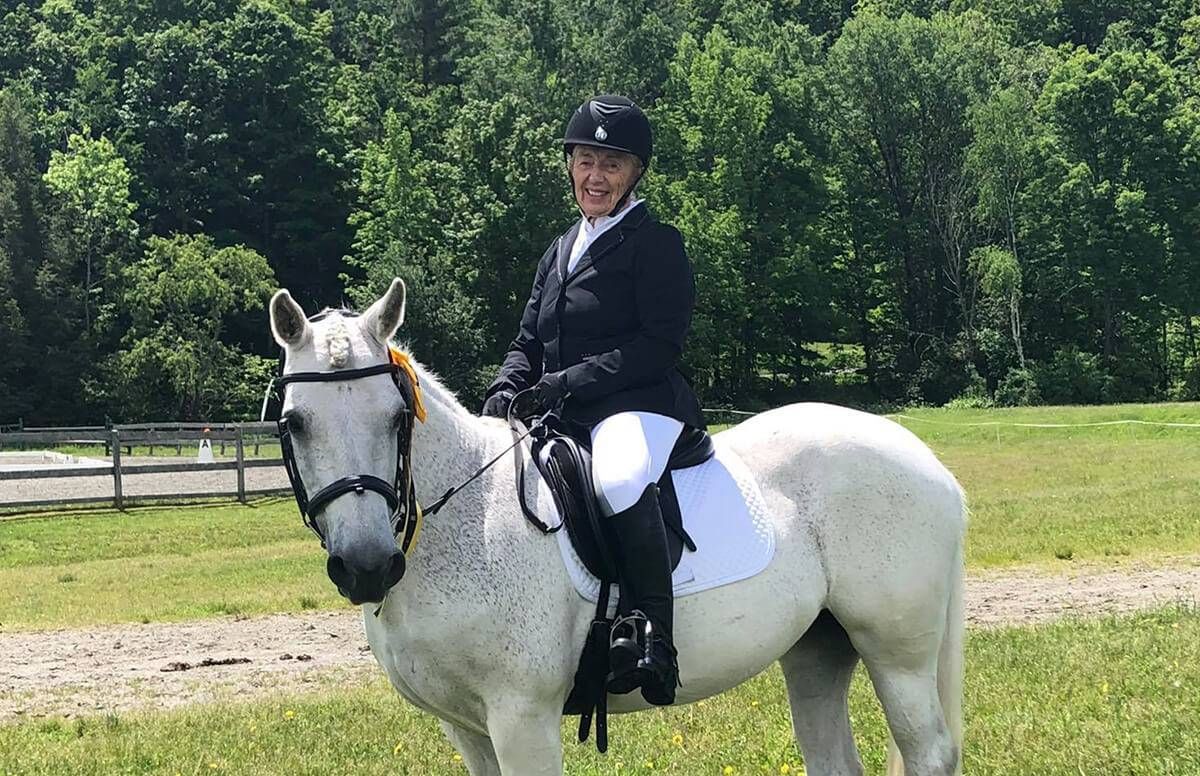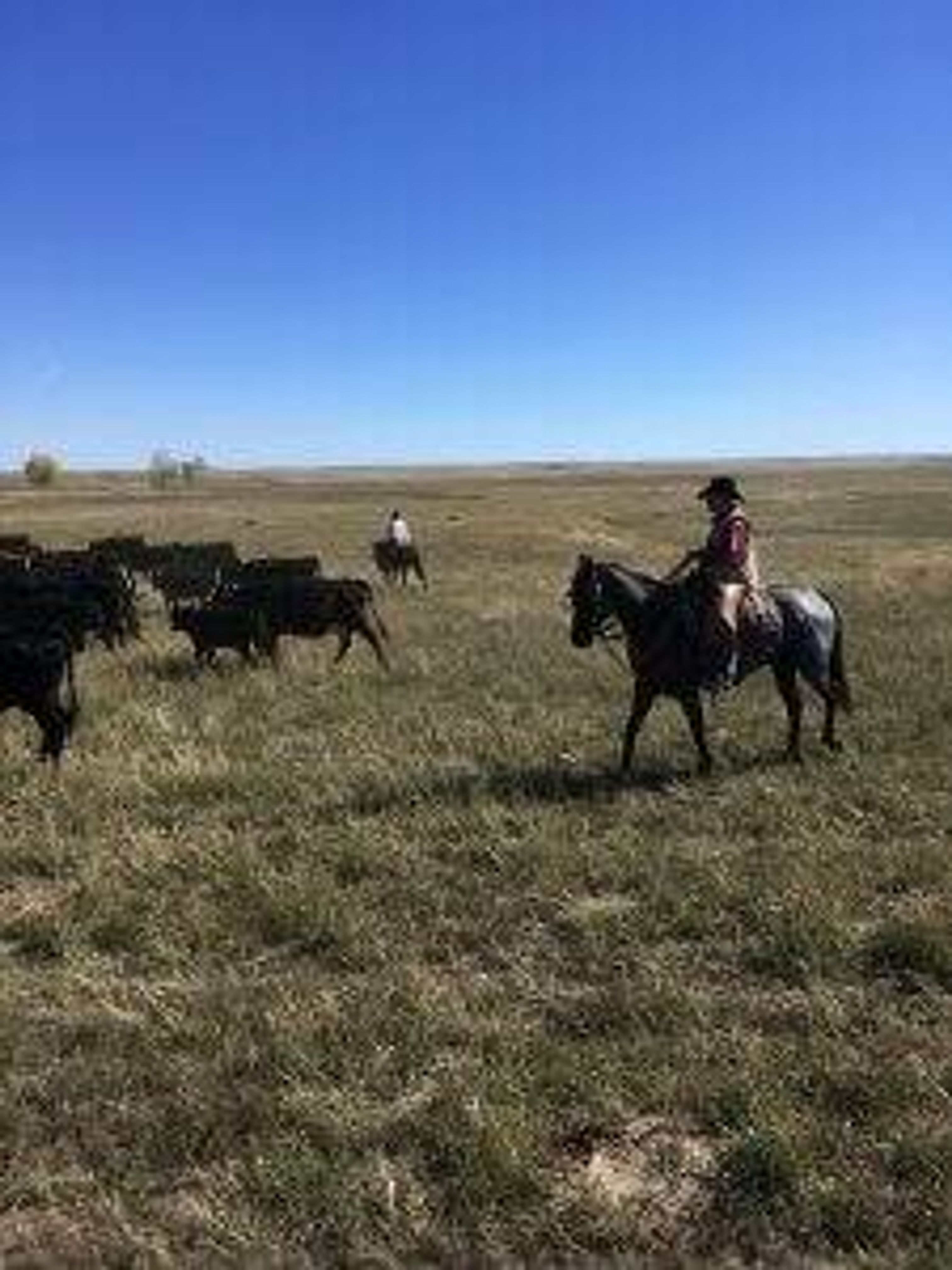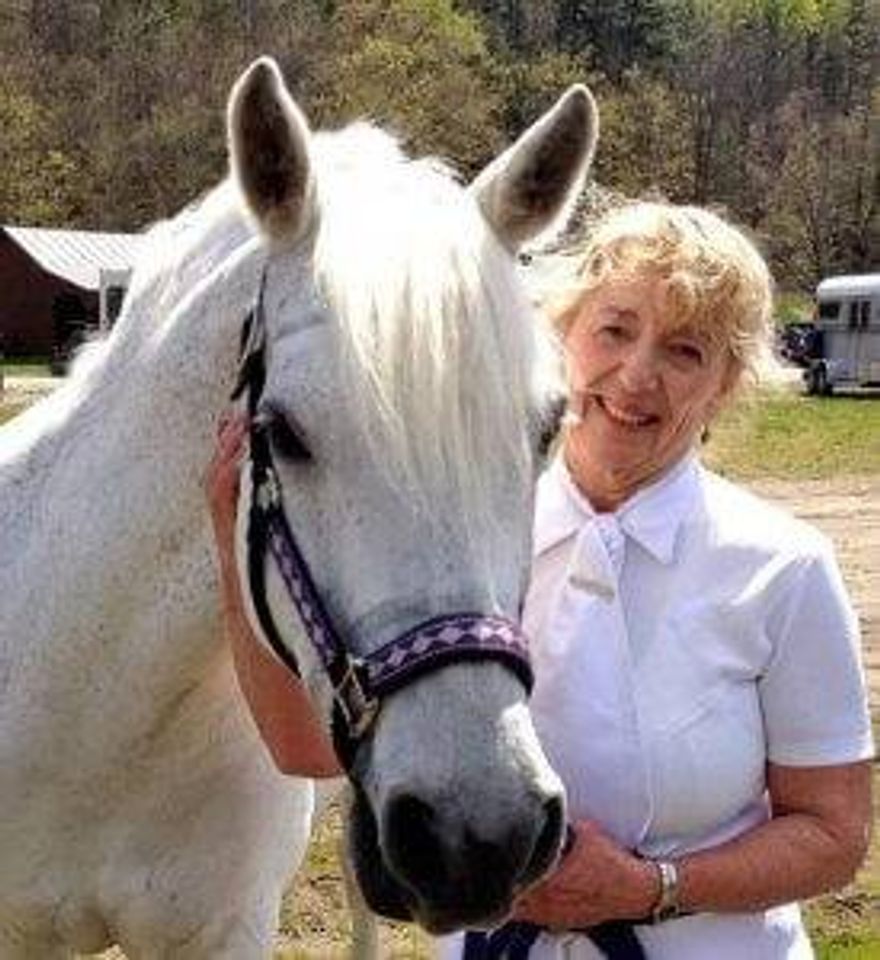It's Never Too Late to Learn How to Ride a Horse
Three riders tell how they got hooked after 50

Have you always dreamed of riding a horse, maybe even owning one? Do you finally have the time and money to turn your dream into a reality? Whatever your age, it’s never too late to slip your foot into a stirrup and mount up.

Burt Schwab, 61, of Middle Grove, N.Y., bought a western bridle at a church bazaar when he was just a kid imagining that someday he would have a horse. By his mid-forties, he’d only ridden three times. As the next decade of life was looming, he realized it was time to take action.
“I started visiting a local riding stable and the opportunity to own two horses presented itself,” says Schwab, who rides at Win$um Ranch in Schuylerville, N.Y. “I'm not sure why I agreed, but I've never looked back. I did a lot of riding without knowing what I was doing. I think the horses knew I just loved being with them and they cut me a lot of slack.”
"There's a great feeling of success when you have a good ride, but it takes a lot of work."
For Schwab and his wife Diana, the adventurous aspect of riding has become part of their lives. Twice each year, the couple travels to South Dakota with their horses to ride out on the open range. For the few weeks they are out west, they live and work like the cowboys — riding for days at a time and moving cattle from one spot to another.
Linda Beck, a horse owner from Hanover, N.H. and rider at O’Reilly Equestrian in Newfane, Vt., longed for a horse when she was a child. Her family lived in town, ruling out the possibility. Even though she enrolled her son in lessons and bought him a polo pony, she didn’t learn to how to ride a horse herself until she was in her early 60s and had retired from teaching.
'I Worked My Way Up'

Unlike Schwab and Beck, Philip Blitz was lucky to be around horses as a child. His uncle worked with Thoroughbred racehorses and when Blitz visited, he had a chance to casually interact with horses, even occasionally ride.
After high school, college and a career in medicine were Blitz's priorities. It wasn’t until his mid 50s that he had a chance to regularly ride. He started taking lessons twice a week and entered horse shows. Competing at American Quarter Horse Association events, he qualified for select classes — a division designed for riders 50 and older.
For 30 years, Blitz, now 86, rode at least twice a week and traveled for horse shows from his home in Avon, Ohio to Pennsylvania and New York. It’s only recently that he’s had to quit, although he visits the stable and his trainer Dan Lemmon in Grafton, Ohio, regularly.
“I started at the bottom and I worked my way up,” Blitz says. “It was like starting with a rowboat and working my way up to a yacht.”
Patience Is a Virtue in Horse Riding
Learning any new activity can be intimidating, but all of these three people agree that riding is an endeavor worth pursuing even if you're not young.
There’s nothing more rewarding that climbing aboard a 1,000-pound animal and realizing that you can guide him where to go and at what speed. But learning to sit and steer at every speed takes time and patience.
“There can be a lot of ups and downs with learning how to ride,” Beck says. “You steadily improve and then boom, you hit a plateau. But it’s like that with learning anything new.”
Learning to ride a horse is not like riding a bike, though. It’s not necessarily easy, and your body doesn’t just know what to do. Riding is an activity you have to want to do and it’s one that requires patience. It’s not a skill that develops overnight, Beck adds.
At first, your goal is simply to learn how to ride a horse without jostling around in the saddle. Riding from Point A to Point B without falling off and while feeling comfortable is a major accomplishment. In the beginning, it will be difficult to see improvement from week to week, but when looking back year over year, you’ll be amazed how much you've improved.
“There’s a great feeling of success when you have a good ride, but it takes a lot of work,” Beck says.

Finding the Right Barn
Stables are as much a social setting as they are a place to learn to ride. Each barn has a certain personality based on the ownership and the regular clients. Some barns cater to youth riders or specialize in teaching adults. Some focus on advanced riders, while others excel at teaching beginners.
There are many different types of riding experiences, from western to English, Dressage, trail riding and speed events. The secret to having a successful experience is finding a facility that fits your goals and personality.
“You need to have some idea of how you’d like to enjoy a horse and then pick a program that encourages that decision,” Schwab says. “It has to be a place where you feel comfortable taking lessons.” Group lesson rates start at $25 and increase based on geographic location and riding goals.
You may only want to ride once or twice a week in a controlled setting. Or you may have aspirations of regular trail riding or even competition, choosing a program that supports your goals and sets you up for success. Blitz says what’s made his decades-long relationship work with Lemmon is that there is a mutual respect for one another’s professions.
“My trainer is tough on his clients when they are wrong, but he’s also a lot of fun to be around,” Blitz says. “He has always picked horses with good minds and good movement that are a good fit for me. That’s helped me win a lot at shows.”
Beck found her first barn by happenstance. She had recently moved from western New York to Vermont and made friends with a woman who owned a barn and rode Dressage. There, Beck learned to ride on her friend’s horse and eventually bought one of her own.
Over the years, Beck wanted to advance her skills, spend winters riding in Aiken, S. C., and enter a few shows. Finding a new place to ride took some research.
“It’s important to check around and ask other people who ride at a place about what they have had success with,” she says. “Do a little research. Each place develops a reputation and you want to find a safe environment where the horses are well taken care of.”
If, after lessons, you find you're interested in buying a horse of your own, ask your instructor or an experienced horse person you trust for help on finding a suitable horse within your budget.
Keeping Active on Horseback
Horseback riding is a physical activity. It doesn’t require the same fitness level as running a marathon or completing a triathlon, but it is an active sport that requires balance and some strength. Beck says that because she was living an active lifestyle — which included skiing and tennis — she was able to transition into the new activity more easily.
Don’t get discouraged if you aren’t at a peak fitness level. Over time and with regular riding, you can develop the muscles and core strength you’ll need to enjoy time in the saddle. Horseback riding is well-documented as having therapeutic benefits and before you know it you’ll start feeling stronger than you imagined.
There is an element of risk involved, perhaps especially for older riders, since all beginners should be prepared to fall off the horse, Beck says — it'll happen. An unexpected dismount is a part of every rider's journey. Learning to get back on is just a part of the process.
Surround yourself with positive and encouraging horsemen, horsewomen and riding instructors, regardless of your chosen path with an equine partner, and you’ll have years of enjoyment.

